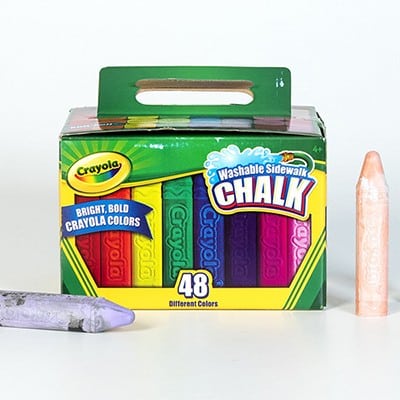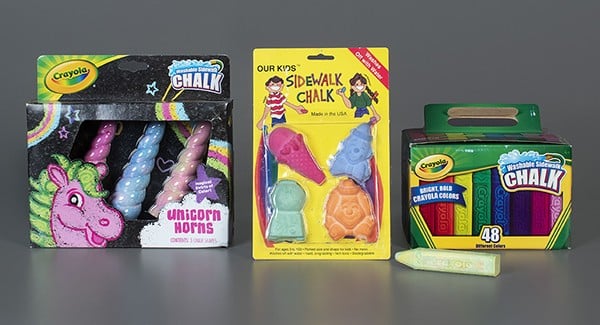
Inducted Year: 2020
Historians have every reason to believe that the earliest people played with chalk. Chalk’s use in playful pursuits relies on its physical properties. Chalk that was used on early boards was made of gypsum, which is found naturally and can be pulverized, colored, and compressed into sticks.
The art of street painting began in Europe in the 16th century when itinerant artists traveled from town to town to decorate public squares and spaces in front of churches for festivals and holy day celebrations. These folk artists used pieces of broken tile, charcoal, and chalk to create their colorful works. The tradition of street painting continued for centuries; only a conflict of the scale of World War II ended this kind of playful public art.
In 1972, a town in Italy hosted a street painters’ competition to publicize the works of a dwindling tradition and to record the art of a few remaining painters. The competition helped to revive street painting and, within a decade or so, street painters were decorating pavements in cities all over the world. Manufactured chalks and artist-made chalks in a variety of colors helped produce drawings that could be more intricate and colorful.
The revival of street painters in the mid-20th century gave rise to street painting and sidewalk chalking as a popular pastime for kids young and old. In fact, you could fill an entire day with fun chalk activities. Drawing on pavement might be an excellent way to spend a sunny morning. A good game of hopscotch just before lunch works up an appetite. Contemplative doodling after lunch surely aids digestion. Cooling down over a game or two of Hangman or tic-tac-toe works cranial muscles as much as hand-eye coordination. There are few limits to what kids can do with chalk. Every sidewalk square, patio, or driveway holds the potential for chalk to transform it into a work of art, a winning game of strategy and cleverness, or a demonstration of physical agility, poise, and balance.

Factoyd: During the COVID-19 pandemic, #ChalkYourWalk flooded social media with messages of hope chalked onto sidewalks and driveways by people practicing social distancing.




